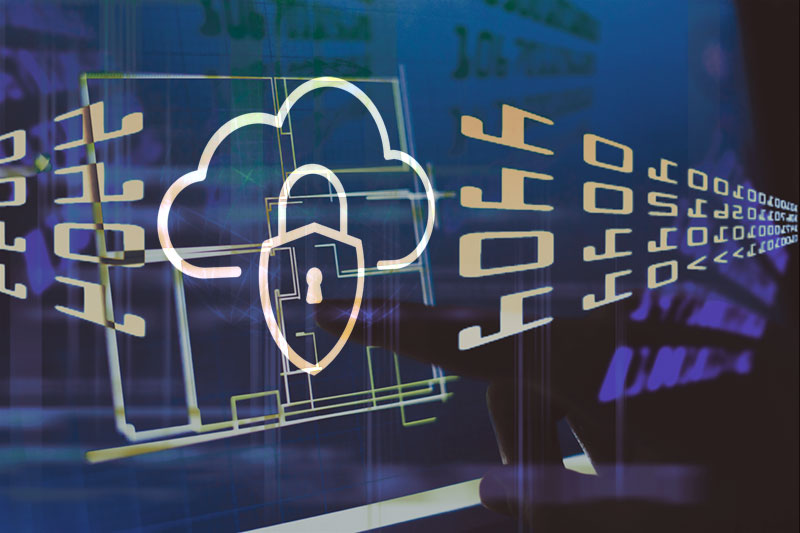Gartner predicts that worldwide spending on cybersecurity will reach $133.7 billion in 2022, a number that has grown each year along with the number of cyber attacks businesses face daily.
While the technical part of IT security – things like firewalls, two-factor authentication, and anti-virus protection – get the most attention, too often businesses overlook how physical security impacts the protection of their cyber assets.
It turns out that a frequent source of data hacking is the physical infiltration of the actual office space by the hacker who can then wreak havoc to the target company’s data by accessing their servers or on-site computers directly. The hacker could be a current employee, an acquaintance of one, or someone who stole an employee’s credential. Obviously, on-site office access control is important to cyber security.
But even remotely, using internet connectivity, the physical security system of an office can provide a digital pathway to a company’s network if overlooked by administrators. In this age of smart building technology where building management and office systems are linked by the IoT networks, the realms of physical and cyber security are merging, creating new risks to fight.
To prevent a data breach, businesses need to emphasize the physical security of their office as much, if not more, than the security of their computer networks alone. Businesses have a duty to not only protect their staff’s wellbeing in the workplace but also to protect their customers’ personal information — a data breach can hurt a company’s public perception and customer trust, potentially hurting future revenue.
So how should businesses look to protect against unauthorized access into their physical offices space with a system that prevents access to cyber network as well? Let’s look at a few key areas to consider:
Cloud-Based Platforms
A cloud-based access control or video surveillance system provides increased cyber security over traditional on-premises systems. A cloud platform enables businesses to remove physical security software, data and important video footage off their internal network and on-site servers, to the security of the cloud, making them harder to hack – either from cyber criminals online or in-person intruders on-site.
The cloud also allows office managers to access security data instantaneously from anywhere on any mobile device. This is especially important for companies with multiple offices as managers can access any video feed at any office no matter where they are located.
Integrated Identity Management
Savvy businesses should find physical access control systems that can integrate all access rights, digital and physical, with the single employee identity at the company’s HR or IT authoritative data source. That allows for one consistent point of reference for all access rights tied to a single employee identity, enabling the simultaneous historical recording of that individual’s online access activity and any corresponding on-premise physical presence over time.
Additionally, if the physical access provider has an open interface, as with Kastle Systems, it allows the employee identity access rights to be tied to a single access credential that can work consistently across multiple locations even if they had diverse access infrastructure. This enables managers to supervise employee movements across multiple offices with the same credential, along with revoking access rights as needed in the case of a termination, loss of credential, or unusual access behavior online or offline.
Monitoring
Companies should have 24-hour monitoring of their office access. As an office manager, you want someone to know in real time when your office access is threatened, not after an event happens. While not all firms have resources or expertise to monitor access activity themselves, this service can be outsourced to managed security providers like Kastle Systems that can monitor space remotely and immediately notify staff of any unauthorized access triggers or if any unusual access activity occurs (like unusual access for a given individual at inappropriate hours). Remote video surveillance can also be integrated so that monitors can visually determine the cause of alarms or abnormal access as they happen and respond accordingly.
Visitor Management
Are you confident granting visitor access rights to your clients and consultants when necessary? As part of improving physical security, businesses will want to use access control to know who is always in their office, including guests. A cloud-based access control system keeps a record of who was in the office and at what time.
Summary
Data protection starts with physical access. Businesses today host so much valuable information that they will remain a rich target for potential attack.
Most business leaders are not security experts, but they also don’t have to be. With cloud-based access control solutions that can be managed remotely, office and facility managers can be confident that their physical office will remain secure and client data will remain protected.
The number of breaches will likely continue, so while businesses continue to invest in cyber security solutions they will want to invest in physical security as well.
Learn more about Kastle’s Managed Security Service here.

